Traveling is not the most sustainable activity you can pick. In fact, taking a plane is probably one of the worst things you can do for the environment. Luckily, there are a few great eco-friendly travel products you can use to help reduce your environmental footprint when you take your next trip.
Often, when you get to a new country, especially one where locals struggle to meet their basic needs and make ends meet, the environment is not always a major concern. And we understand the privilege we have to travel and worry about the planet’s well-being. But that’s also why we feel it’s important to spread awareness about this so that anyone who has the ability to travel do so in a way that allows locals to preserve the beauty of the land they allow us to discover.
If you’re looking to be a more eco-friendly traveler, check out our tips here.
This article may contain affiliate/compensated links. For more information, please see our disclaimer here. We take all the efforts necessary to ensure the information included in this post is accurate, correct and current, sometimes, things just change! Travel information like opening hours, business operations and prices may change. If you find anything in this post that is incorrect or outdated, please let me know in the comments so I can update it for other readers. Cheers!
We love helping you plan amazing trips. If you need any of these services, consider booking them through our affiliate links. Without costing you anything extra, you will be helping support us so we can continue to write these blogs for you.
We thank you again for your continued support.
🏠 Find the perfect place to stay with Booking.com
✈️ Get the cheapest flights with Skyscanner
🚣 Book your favorite activities with Viator
💻 Make sure you have everything you need for your epic trip by checking our store on Amazon
Table of Contents
24 sustainable products to help you be a more responsible traveler
Here are the 24 eco-friendly products to travel with. Having these sustainable products allowed us to leave a smaller footprint while exploring beautiful places.
We broke them out into groups to make it easier for you to browse them. However, we’ll be super clear, you don’t NEED all these items. If your style of travel or the length of your usual trips doesn’t require you to need certain items, don’t get them. That is the least eco-friendly thing you can do, and that is not what we’re trying to encourage here.
Eco-friendly products to help you use less plastic while you travel
These sustainable travel products will allow you to have your own items so that you don’t have to use single-use plastic products that will only be thrown away.
1. A water purifying bottle to stop using plastic water bottles
This is one of the best purchases you can possibly make when you travel abroad. Truth is, most countries don’t have drinking water available to them from the tap. Instead, you have to constantly buy plastic water bottles. And when recycling isn’t an option, you really want to avoid these.
Enter the water purifying bottle. These bad boys will help you save money and the planet.
We’ve tried two different bottles so far. And for now, we have a preference for the Grayl. This compact bottle with an integrated filter allows you to fill it up, and purifies the water as you press down on it. It’s easy to use, and very convenient in countries that don’t have drinking water readily available.



2. A reusable water bottle is a great sustainable product to travel with
You’re probably wondering why you need a reusable water bottle if you have a purifying one already. That’s a great question, and if you think you have enough with one bottle, then skip to the next item.
However, if you’re like us and like to go on long hikes, or leave your home base during the whole day, without necessarily having access to drinking water, then consider getting a reusable water bottle. Or bring the one you already have at home.
Usually, we’ll filter our water with our purifying bottle, then put that clean water into our reusable water bottle. This allows us to have lots of drinking water available to us. We don’t have to worry about running out. We especially love our insulated water bottle, because it allows for our water to stay cold all day long (or keeps Derek’s coffee hot).
If this sounds like it could be helpful, then make sure you bring your reusable water bottle with you.


3. Reusable utensils to avoid single-use plastic cutlery
We love eating, but we hate the amount of plastic we see – from the bags to containers to cutlery. From the moment you sit on the plane, to eating at local markets, and even in certain restaurants, you’re handed plastic cutlery. Non-recyclable items that just add to already full landfills. Ugh!
Instead, we recommend you invest in reusable cutlery made from bamboo or metal. The trick, however, is to make sure you remember to carry these items with you during the day. Our tip is to keep them in your day pack and wash them when you get home.
Another thing to keep in mind is that certain airlines don’t allow you to bring your knife onboard. Make sure you check their regulations or keep the knife only in your checked luggage.


4. Reusable bags from home to help with groceries
By now, we all have a ton of reusable tote bags at home. Those tote bags you got from an event you attended, or that your favorite brand sent you. Well, bring one or two of those with you when you travel to be more sustainable.
These bags are great to use as beach bags, to do your groceries at the local market, or to keep your dirty clothes in when you travel. The uses they serve are endless. They help you reduce the amount of plastic, and subconsciously, locals will realize that plastic bags are not always needed. Win-Win!
If you have reusable produce bags at home and know you’ll be buying fresh produce on your trip, bring a few of those as well. To be honest, we never use them at home, we always reuse “single-use” plastic bags like the bags our loaf of bread comes in. But to each their own. If these are in your arsenal of eco-friendly products you use, pack them as well!
And again, make sure you keep these in your day bag when you know you’ll be buying food, so you don’t have to accidentally get a plastic bag or another tote bag you don’t really need.


5. Silicone snack bags to carry your treats around without plastic
We love these bags at home and when we travel. We store our products in these bags when we’re traveling because they’re really well-sealed. And once we arrive at our destination, we use them to carry snacks around.
They are a bit of an investment, so if you don’t think you’ll be using them often, skip to the next item. You can also use other bags (like the “single-use” bags we spoke about earlier).
And the best thing about “single-use” plastic bags in countries where they don’t have recycling is that once you’re done with them, you can use them as adventure bags. What are those? Those are bags you bring with you to the beach, or around town and you pick up trash in. We hate seeing garbage in beautiful places, so we always bring an adventure bag with us to pick up litter. We invite you to do the same.

6. Takeaway containers to avoid styrofoam and other plastic packaging
Another negative side to being a foodie and eating in restaurants and markets is that we often take food to go. They make easy lunches the next day. The only problem is that often, the food is overpacked in plastic – a plastic or styrofoam container, in a plastic bag, with plastic cutlery. Ugh!
One thing we always bring with us is a container. You can bring any “tupperwear” type container you have at home, or bring a collapsable one. When we travel, we use the container to pack our smaller things in. And when we’re at our destination, we use them at restaurants and markets. They’re great to have around for so many reasons.


Eco-friendly travel products for basic hygiene
Here are some sustainable travel products you can use to be more eco-conscious on the road. These eco-friendly products will help reduce the amount of plastic you use, will leave smaller traces during their lifetime, and will be better for the environment overall. These tips and products can (and should) be used as much during your trips as when you’re at home!
If you want some tips on how to be more sustainable at home, we have articles to help you go zero-waste in the kitchen and the bathroom.
7. Use a solid bar of soap instead of liquid soap in a plastic bottle
This is probably one of the easiest zero-waste and eco-friendly travel solutions out there. Swap that liquid bottle of body wash for a solid bar of soap. We made this shift a while ago and we love it, at home and while we travel!
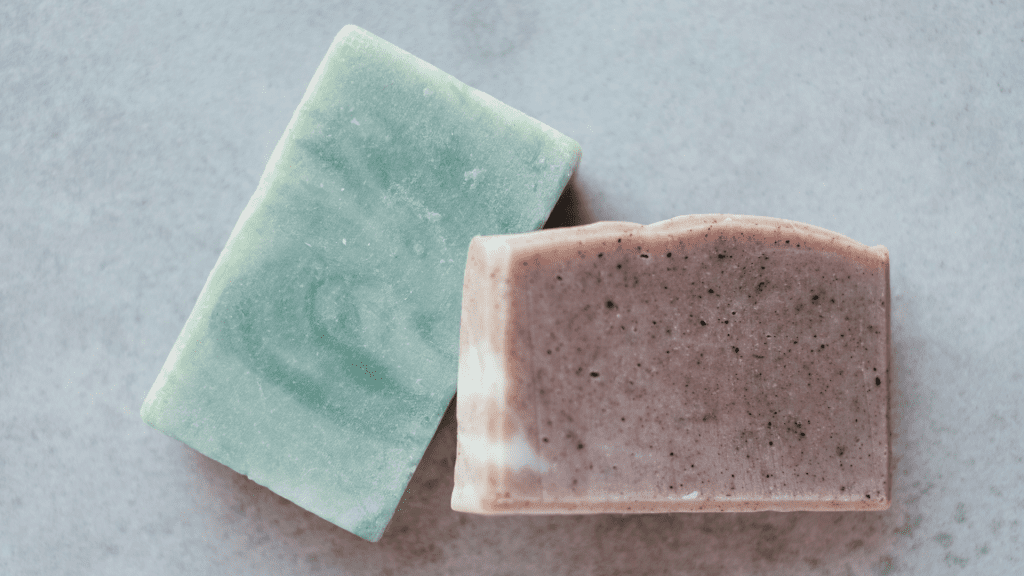
First, the bar of soap often has healthier ingredients and is more cost-effective than body wash. Plus, there’s no plastic packaging to get rid of, which is great when you’re traveling to countries that don’t have sustainable recycling efforts in place. And, there’s no heavy plastic bottle to carry around or worry about leaks in your bags when you hit the road. Such a great solution with fewer inconveniences and more positive impacts!

8. Go for solid shampoo and conditioner bars as eco-friendly travel products
Another eco-friendly travel solution that will help you reduce plastic waste, and that’s better for your health. Switch from using liquid shampoo and conditioner to solid bars.
We found this great Canadian company called BKind, which sells amazing shampoo and conditioner bars. We love them for everyday use – they hydrate nicely, they clean well and they smell amazing!
What we also adore about shampoo and conditioner bars are that they often have better ingredients, and because they’re still a little niche, the companies who create them are either local or just more environmentally conscious than brands who make regular liquid versions. Plus, they’re such great sustainable products to travel with because we don’t have to worry about leaks, weight limits, or empty plastic bottles.


9. Travel with an eco-friendly deodorant stick
Full disclosure here – We didn’t always use deodorant, and you don’t have to if you don’t want to. Derek still doesn’t use it!
Actually, after our long-term trip, we both stopped using it altogether because we didn’t feel like we needed it. After you go through a ‘chemical deodorant detox’ your body regulates and emits fewer odors. In the summer heat, when I, Carine, felt like I needed a little more freshness, I started making my own deodorant (which is a great eco-friendly solution).
If you don’t want to start your own deodorant production, we recommend buying a deodorant made of natural ingredients and without plastic packaging. There are a few solutions we’ve tried and love. Some products, like the Montreal-local Attitude brand, have deodorant that’s in biodegradable packaging, that’s vegan and chemical-free.
Other products, like these deodorant crystals, are often fully natural and don’t come in packaging (or have minimal packaging. They also last for years. And you also have minimal packaging deodorant bars that will help with odor control. There are a ton of solutions out there. Try a few out and see what works best for you.


10. Use a bamboo toothbrush instead of a plastic one for eco-friendly traveling
Another easy zero-waste travel product swap to make! Switch to a bamboo toothbrush instead of a plastic one. According to research by Foreo, 1 billion toothbrushes are thrown away annually in the United States alone – that’s about 50 million pounds of waste to landfills. That is a scary number to look at considering how an easy switch to a compostable and fully biodegradable toothbrush could help.
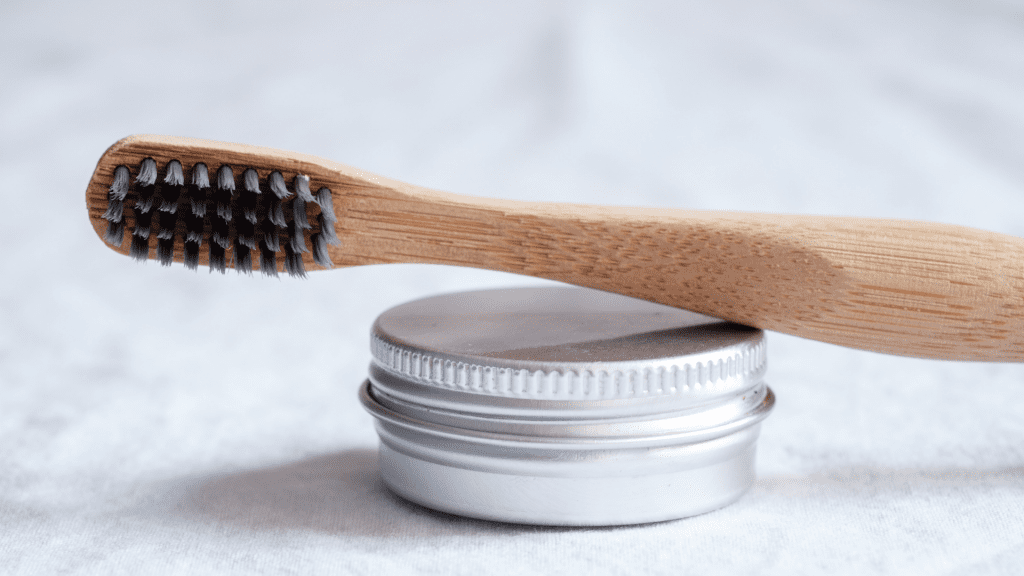
There are a ton of bamboo toothbrushes out there. And bamboo is a great alternative to use because it’s a natural plant and it’s fully biodegradable. Basically, it’s a renewable and sustainable resource. And best of all, it’s one of the fastest-growing plants on the planet so no need to worry about running out any time soon! So switch to a bamboo toothbrush, whether you’re traveling or not! It’s such an easy solution!

However, if you’re not ready to make the switch just yet, know that Terracycle offers a new recycling program for Oral B products. So even if you’re using plastic on a daily basis, at least you can send them the items when you’re done and they will give them a new life.
11. Use Last Swab ear-cleaners instead of plastic ones
Full disclosure again – we don’t really use these plastic swabs to clean our ears. Nature and our bodies have their own way of doing that. However, if you’re a fan of using these products, we recommend 2 different solutions:
LastSwab has created a reusable swab to clean out your ears or to use for other purposes. They are a reusable, sustainable and sanitary alternative to cotton swabs, cotton buds, and Q tips. One LastSwab is meant to replace 1000 single-use cotton swabs. Not too shabby!
The LastSwab comes with a convenient and biodegradable carrying case that keeps your reusable q tip stored away safely. The packaging it comes in is made of eco-friendly cardboard. And you can easily clean your reusable swab with water and soap. We love the thoughtful and intentional creation of this product.

You can also opt for swabs made of natural ingredients like bamboo and cotton. These swabs are fully biodegradable so they’re much better than the plastic alternatives.

Depending on how often you use these swabs, and what you use them for, you can choose either of these sustainable travel products (and mak sure you use them at home too!)
12. Switch from disposable floss picks to reusable ones for more sustainable travel products
We really hate anything that is single-use and disposable, especially when it has plastic in it, like a floss pick. We usually opt for regular floss, but know some people who swear by floss picks, so here is an eco-friendly solution you can try if you like the picks.
We found the Quip Dental pick that offers an innovative and reusable solution to plastic dental floss picks. We recommend you give it a try if this is a product you like to use. It will significantly help you reduce the amount of plastic you dispose of at the end of the day! You only have to refill the floss part every 3 months. And each refill replaces 180 single-use picks. That feels like a great solution!

13. Use a reusable safety razor as an eco-friendly travel product to reduce plastic
When Derek was a barber, he got used to using straight blades and often shaves (or cleans up) his beard using one. I, Carine, was a bit skeptical about using a straight blade on my legs and other regions, but I was committed to trying. I ordered a straight blade online and never looked back. It’s been one of the easiest eco-friendly swaps I’ve made at home and for travel.
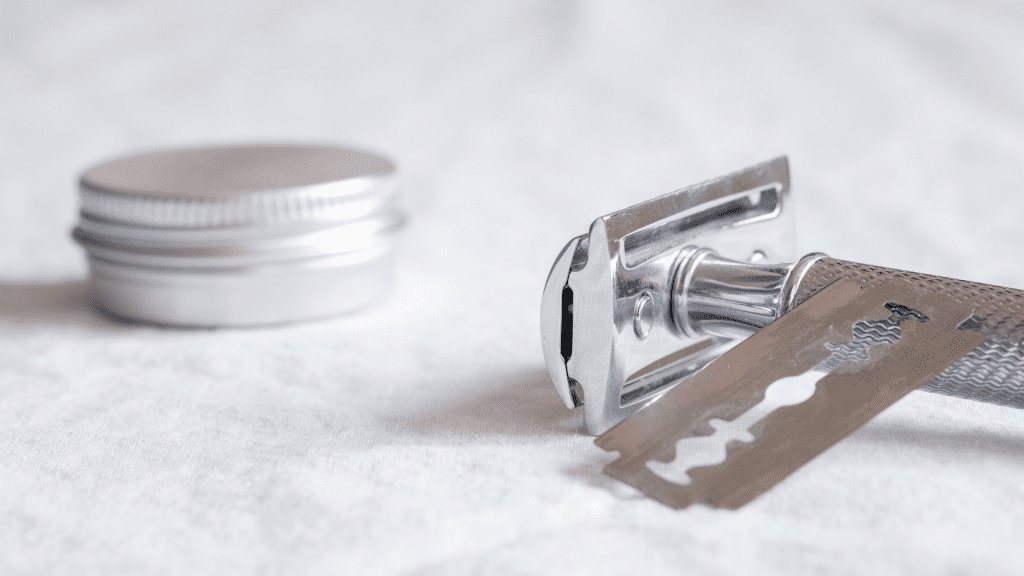
Yes, it did take some getting used to, but after a few shaves, I felt like a pro. Sure, you have to go a little slower in certain regions, but the shave is much smoother, and best of all, there is very little waste! In fact, once you’re done with your blades, you can collect them in a bin and drop them off at public or private scrap metal facilities. If not, certain companies like Leaf have a recycling program.
However, there is one little thing to note for when you travel – they won’t allow you to put this eco-friendly product in your carry-on, so you will need to put it in your checked bags. If you are going on a shorter trip, try shaving before so you don’t need to bring a razor with you, if not, you can bring a conventional razor with you, and enroll in a recycling program like the one from Terracycle. They will collect and recycle these blades and other products.

13. Use washable menstrual underwear to be a more sustainable traveler
We’ve spoken about this in a few of our zero-waste or eco-friendly articles. Carine is a huge advocate of zero-waste menstrual products. And we know this is a sensitive topic, and you really don’t want to mess around during this time of the month, but there are so many great options out there, especially if you are trying to travel in a more eco-friendly way.
Period underwear are also a life-saver. You can wear them instead of pads or as a safety net in case you’re prone to leaks. Here are some brands you can check out for period underwear:
- Knix – They offer period underwear and swimwear, incontinence underwear, maternity and postpartum wear and so much more
- Viita Protection – A Quebec brand that offers period and incontinence underwear (the latter for both men and women)
- Mme l’Ovary – Another Quebec brand that has period underwear, reusable pads and menstrual cups. Unlike the two other brands, their underwear have removable pads, so you can swap them during the day, depending on your flow.
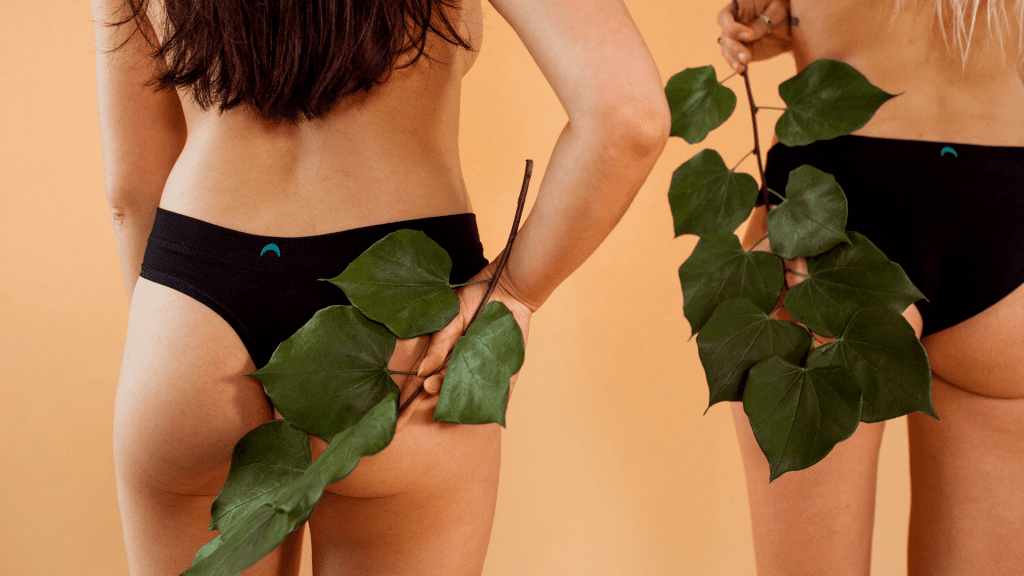
These products allow you to go zero-waste and are much better for your health than glues and chemicals used in regular pads. They’re great to use at home and when you travel.
15. Use menstrual cups to be an eco-friendly traveler
Once again, this time of the month is a very tricky time that you don’t necessarily mess with, but know that there are a ton of options available to help you reduce the amount of plastic and waste you create. This is important at home, but especially when you travel and they don’t have ways of disposing of the products properly.
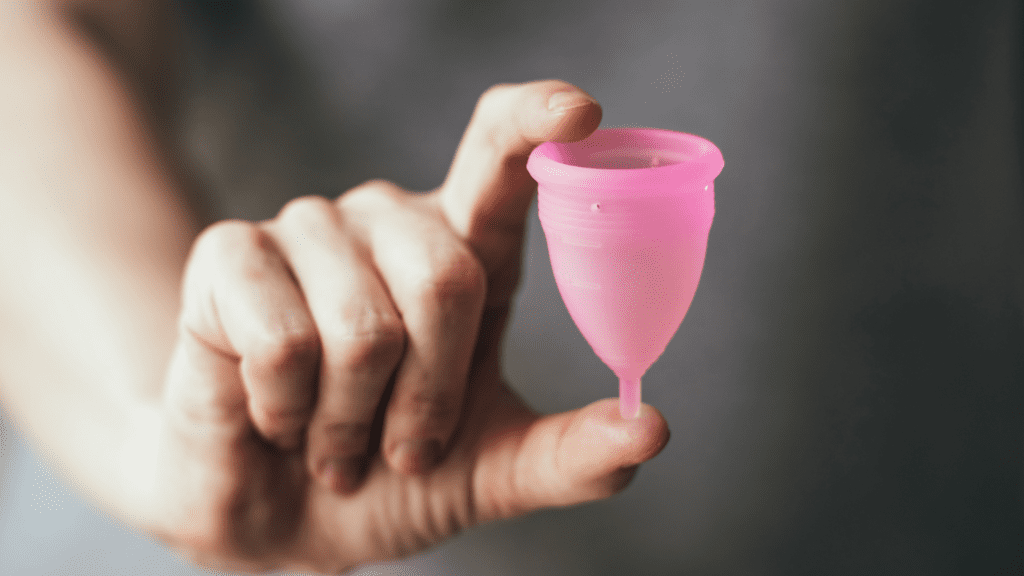
First, to replace tampons, there are a great variety of cups. They come in all sorts of shapes and sizes to fit your needs. If you’re curious about finding the right menstrual cup for you, you can check this quiz out. It will help you find the right and even offer discount codes.
If menstrual cups seem intimidating to you, opt for non-applicator tampons with minimal packaging and no plastic or paper applicators. They are still a better alternative than plastic-heavy products.



We do recommend you find a solution that works for you while you’re at home, so you’re not dealing with travel woes and menstrual complications all at the same time. Better to test this out while you’re in your comfort zone!
16. Bring a washable reusable makeup removing cloth while you travel sustainably
Full disclosure here – Carine doesn’t really wear makeup, especially when traveling. But still uses these reusable wipes.
You know that we hate anything single-use and disposable, so we’re not fans of wipes – for your face, makeup or genitals. You can easily make these products at home, or find reusable options. Cloth in a box makes a reusable makeup remover wipe for your face and eyes. Even if you don’t wear makeup, these wipes offer a solution for cleaning your face.


Eco-friendly travel products to protect you from nature’s elements
Here are a few options of sustainable travel products you can use to protect yourself from the elements. These products work better in sunny destinations, but some will also help you in colder weather.
17. Use reef-safe sunscreen to help our corals thrive
We love the sun. In fact, we’re known to escape the winter and run away to warmer weather. But we hate what the sun does to your skin. That’s why we always use reef-safe sunscreen. Because we also love scuba diving and admiring the underwater world.
When it comes to reef-safe sunscreen, there are two common chemicals to avoid. Oxybenzone and octinoxate have been deemed potentially harmful to aquatic life by many researchers worldwide. So make sure you check the labels when you buy sunscreen to make sure they don’t include these chemicals. You can buy any of the products on this list. And below are a few we’ve tried and loved.

18. Opt for natural mosquito repellent – a must-have eco-freindly
At this point, we all know that mosquito repellent is really bad for you and for the environment. But, in certain places, and with certain people (like Carine), it’s a must, if not, we get eaten alive. It’s just not fun and ruins our whole experience.
One of the ways we’ve found to combat sandflies is by using coconut oil on our skin. It works well because it creates a natural barrier that they can’t get through. If not, there are a few good natural mosquito repellents that work well without harming the environment. Here are some of them.


Must-have sustainable travel items to be a more efficient traveler
Here are a few eco-friendly items that we pack with us when we travel that help us be more efficient, more organized and pack less. These items can be used on trips abroad, whether long or short and even on campaign trips at home. If you already have some of these things at home, or something equivalent to them, don’t buy these for the fun of it. Just bring what you already have!
19. Pack a microfiber towel to be more sustainable
We love our microfiber towel and highly recommend it if you travel or go camping often. It’s lightweight, dries quickly and can easily be transported – all great things when you travel. But best of all, it’s made of recycled bottles, so it’s also a plus for the environment.
You can even use these towels at home – for beach days, at yoga or elsewhere.

20. Pack a Scrubba bag to do laundry in a sustainble way
Our Scrubba bag was probably one of our favorite eco-friendly product purchases yet! We take it with us on long trips, short trips, camping trips, scuba diving trips… everywhere!
This innovative little bag doubles as a laundry machine and dry bag. We use it to wash smaller daily items like socks and underwear. It helps us pack less and constantly have clean clothes in a jiffy. Since we love scuba diving, it also allows us to carry our things safely on boats, without having to worry.
We can’t recommend the Scrubba bag enough. It’s an eco-friendly travel lifesaver!

21. Bring along eco-friendly laundry detergent
When it comes to keeping clothes clean, you have a few eco-friendly options. What you choose will depend on your personal preference, and there’s no wrong answer.
You can choose to pack a small jar of whatever detergent you use at home. We’re hoping it’s an eco-friendly detergent that’s either biodegradable, vegan, cruelty-free, etc. But if you haven’t made that switch yet, it’s ok. You can pack whatever you’re using. The most eco-friendly choice you can make is to use what you already have.
If not, you can choose to buy eco-friendly detergent strips. These have minimal packaging and are hypoallergenic, vegan-friendly and paraben-free. Best of all, they’re lightweight, no leaks possible and take up minimal space. Perfect for sustainable travelers.

22. Get organized with packing cubes
Packing cubes are another great purchase investment we made when we started long-term traveling. They help us stay organized, keep everything together and allow us to save space in our bags.
If you don’t already have packing cubes and are looking for some, we suggest getting these. They are made from recycled plastic bottles and come in a variety of sizes. They are quite pricey, so if this isn’t something that you think will help you in the long run, just skip them and carry on the way you’ve been traveling.

23. Always pack a sewing kit – the ultimate eco-friendly travel essential
Derek is a big clutz and often tears his clothes. We even joke about how so many of his clothes have ‘Derek holes’ in them. That’s why we always have a sewing kit with us. It allows us to mend clothes on the fly, instead of having to buy new items.
We pack ours along when we go on international trips or camping getaways. And it’s a real lifesaver.
If you already have a sewing kit at home, bring that (or a few of the essential items you know you’ll need). Or, if you’re staying in a hotel that has a complimentary one, grab that one, especially if it’s compact and has what you need. If not, you can invest in a sewing kit that you can use at home and during your travels.
24. If you love to read, invest in a Kindle as an eco-friendly travel product to pack along
Full disclosure – we actually love reading real books. Turning pages, keeping the books in our library, admiring the covers, etc. However, long-term travel taught us that finding the books you really want to read, in your own language, is not always easy or possible.
During our first long-term trip, we brought actual books with us (poor little nooby travelers we were). When we finished our books, we quickly realized that English language books are really hard to find abroad. We would look high and low for English bookstores. Or we would swap our books in ‘take one, leave one’ libraries on the street or in hotels. We would swap with other travelers. And as much as that was a little fun, at one point, you don’t want to waste your time reading a book you’re not interested in.
That’s why we invested in a Kindle. If you are a big reader, then we highly recommend you get one. Especially for long-term trips, and more so if you’re going to use this at home.
We read that you have to read at least 23 books to offset the purchase of your Kindle, so if this is not something you plan on doing with the device, just stick to buying regular books.
There are a ton of options out there, so do your research and find the perfect one for you.

Extra eco-friendly tips to keep in mind for your next trip
Before we wrap it up, we wanted to remind you about a few tips to keep in mind when you’re planning and packing for your next trip. You don’t need to go on a long international trip to put use tips. You can easily apply them to your everyday life at home too.
1. Use what you already have at home
We know we shared a bunch of eco-friendly and sustainable travel products with you. And we know how fun it can be to go shopping before a trip to get new things to test. But before you spend a ton on things you may or may not need, use what you have at home!
The least eco-friendly thing you can do is to throw out something you have (that may not be eco-friendly) and replace it with something sustainable. Before you get anything new, make sure you use what you have, sustainable or not, and if you can give it a second life, you get extra brownie points from Mother Nature!
2. Only buy what you need – not things on a list
Sure, we put a list of sustainable travel items that work for us, our types of trips and our lifestyle. But just because something is on a list, doesn’t mean you need it or that you should buy it.
If you tend to go on short trips where you don’t need to do laundry, then you don’t need the Scrubba bag. If you hate to read, don’t buy a Kindle. Only get things that will add value to your trip and your life at home. If they won’t, then you don’t need them!
3. Remember the basics: Refuse, reuse, reduce. Often, recycle is not an option
When you’re traveling, recycling is often not an option. Not many countries have proper recycling programs (yeah, even in Canada and the States, our recycling programs are very broken). So the 4 R’s don’t really work. You can’t buy a plastic water bottle and think “Oh, I’ll recycle this!” It’s not possible in so many places around the world.
Instead, resort to the 3 other R’s:
- Refuse what you don’t need or anything that is truly single-use.
- Reuse what you can, even if it’s supposed to be single-use. For example, we always reuse plastic bags from bread we buy to pick up trash on the beach. #adventurebag
- Reduce the amount of things you buy, you pack, you throw away. Try to buy things with little or no packaging. If they have packaging, shy away from plastic. Instead, opt for things wrapped in paper or foil.
4. Try to avoid single-use plastic, or at least, don’t use plastic once
Like we mentioned, try to avoid single-use plastic as much as possible – there are a ton of solutions that help you avoid plastic water bottles, and straws, and bags. But sometimes, plastic is inevitable. Certain foods are only sold in plastic packaging. So then what?
Well, if plastic can’t be avoided, it doesn’t need to be single-use. Reuse as much of the plastic you collect as you can. Plastic bags can be used to store wet items when you’re traveling, or gain a new life as a garbage bag or better yet, an adventure bag (to pick up trash on beaches). Plastic cutlery can be reused too.
If you shift your mindset and try to reuse things to give them a second chance to be useful, you’ll realize that single-use doesn’t actually exist.
If you want some tips on how to shift your mindset, our article will help you see things differently when trying to go zero-waste.
5. Keep a list of things you do and don’t use on trips
One of the things we do after every trip is to assess what items we used a lot, a little or not at all. From clothes to accessories to toiletries, and everything in between.
This helps us be more efficient with our packing for the next trip, and to save space and weight in our luggage. The less things you carry, the smaller your environmental impact when you fly. And, the more you realize that you actually don’t need much when traveling (or at home). So don’t be afraid to Marie Kondo some of your stuff.
6. Take care of what you already have
The more you take care of things you have, the less you need to replace them. This saves you money and time, and it’s better for the environment. We often have this idea that we need to replace things when they are broken. But we would help the environment (and our wallets) so much if we didn’t think this way.
So don’t be afraid to mend things when they’re broken, or ripped. Fix things that can be saved. Reuse what you can. Don’t buy new things, instead, opt for secondhand items.
7. Use these items at home too
You should never (or rarely) buy items only to use them for a specific occasion. The most sustainable thing you can do is to use the things you get in as many places as possible.
For example, our Scrubba bag works great on our camping trips, scuba trips and longer trips. The cutlery we have comes camping with us as well as on our longer trips. Same for our sewing kit.
The more use you get out of these items, the better it is for the environment and your wallet.
If you want to be more sustainable every day, we have a bunch of eco-friendly tips to help you.
A quick recap of the eco-friendly travel products for your next trip
As a recap, here are the items we have found to be useful for us when we travel. These are eco-friendly travel products meant to be useful on your trip while being gentle on the environment. Again, don’t forget to only get the items that will truly be used on your trips, use what you already have at home, and to use these items at home or for other occasions as well.
- Water purifying bottle
- Reusable water bottle
- Reusable utensils
- Reusable bags from home
- Silicone snack bags
- Takeaway containers
- Solid soap bar
- Solid shampoo and conditioner bars
- Deodorant stick
- Bamboo toothbrush
- Last swab
- Quip dental pick
- Reusable razor
- Washable period underwear
- Menstrual cups
- Washable reusable makeup removing cloth
- Reef-safe sunscreen
- Natural mosquito repellent
- Microfiber towel
- Scrubba bag
- Laudry detergent tabs
- Packing cubes
- Sewing kit
- Kindle
Let us know if this list was practical for you. Are there items we may have forgotten? Are there any that you don’t think should be on the list? Let us know in the comments.
We put a lot of time and effort into the content we create. Please like, comment and share, every action on your part helps us out tremendously and is very much appreciated.
You can also help us by pinning it for others to find.
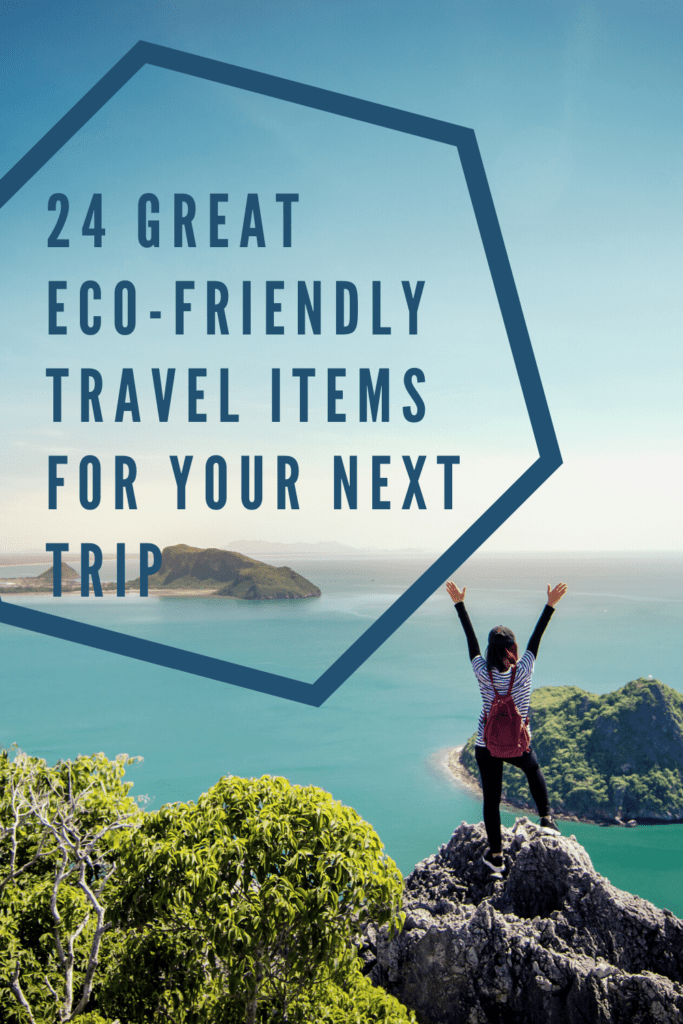
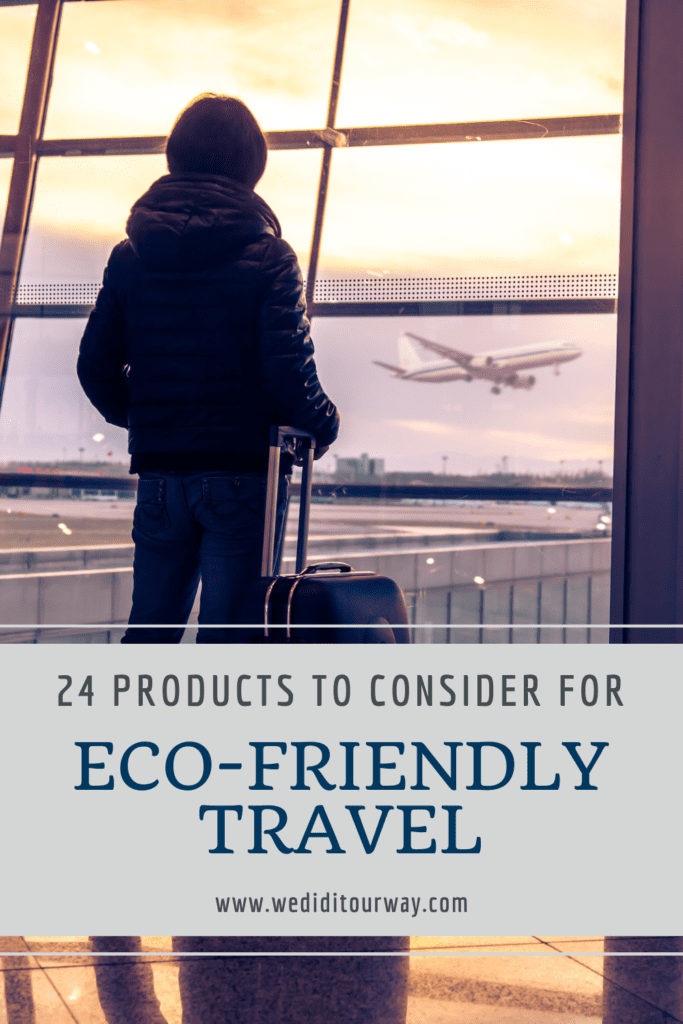
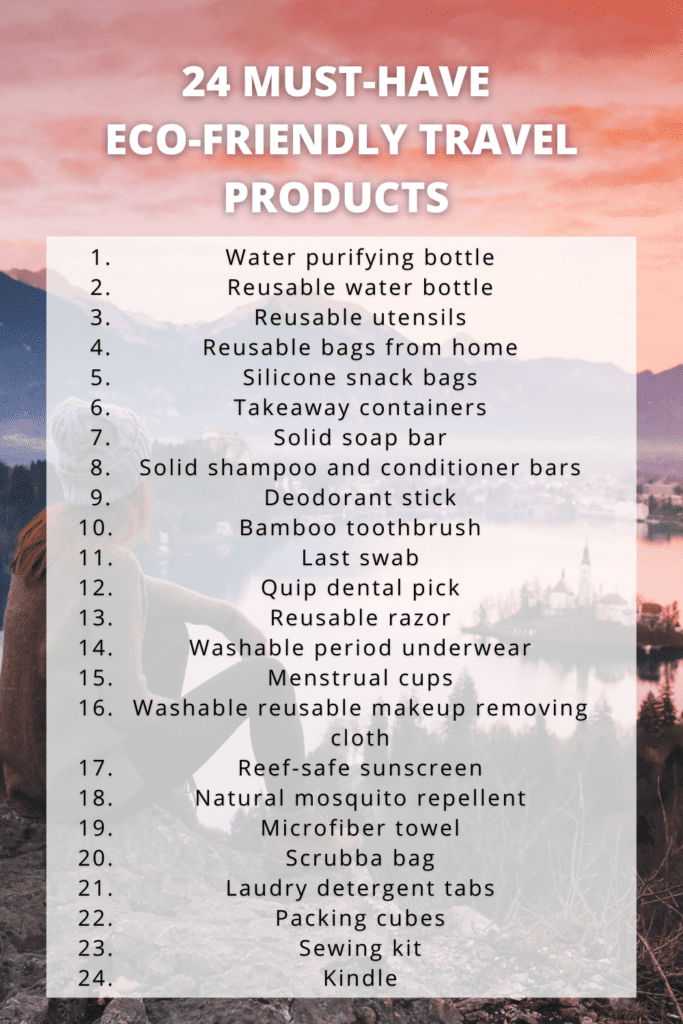


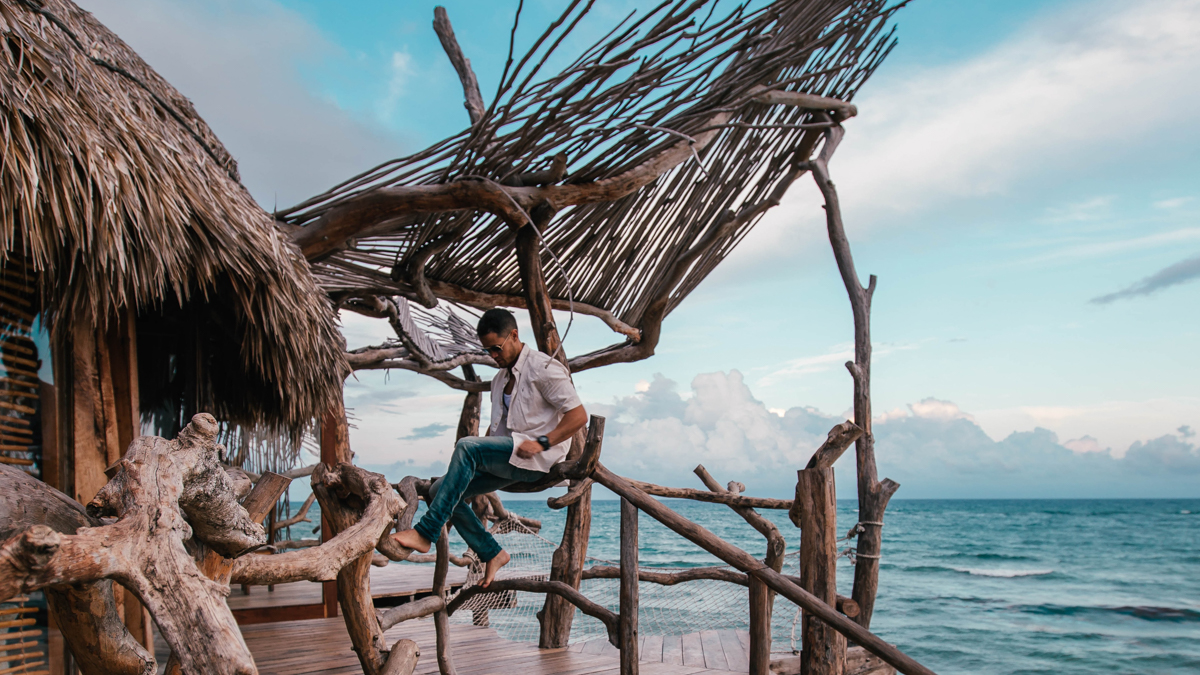

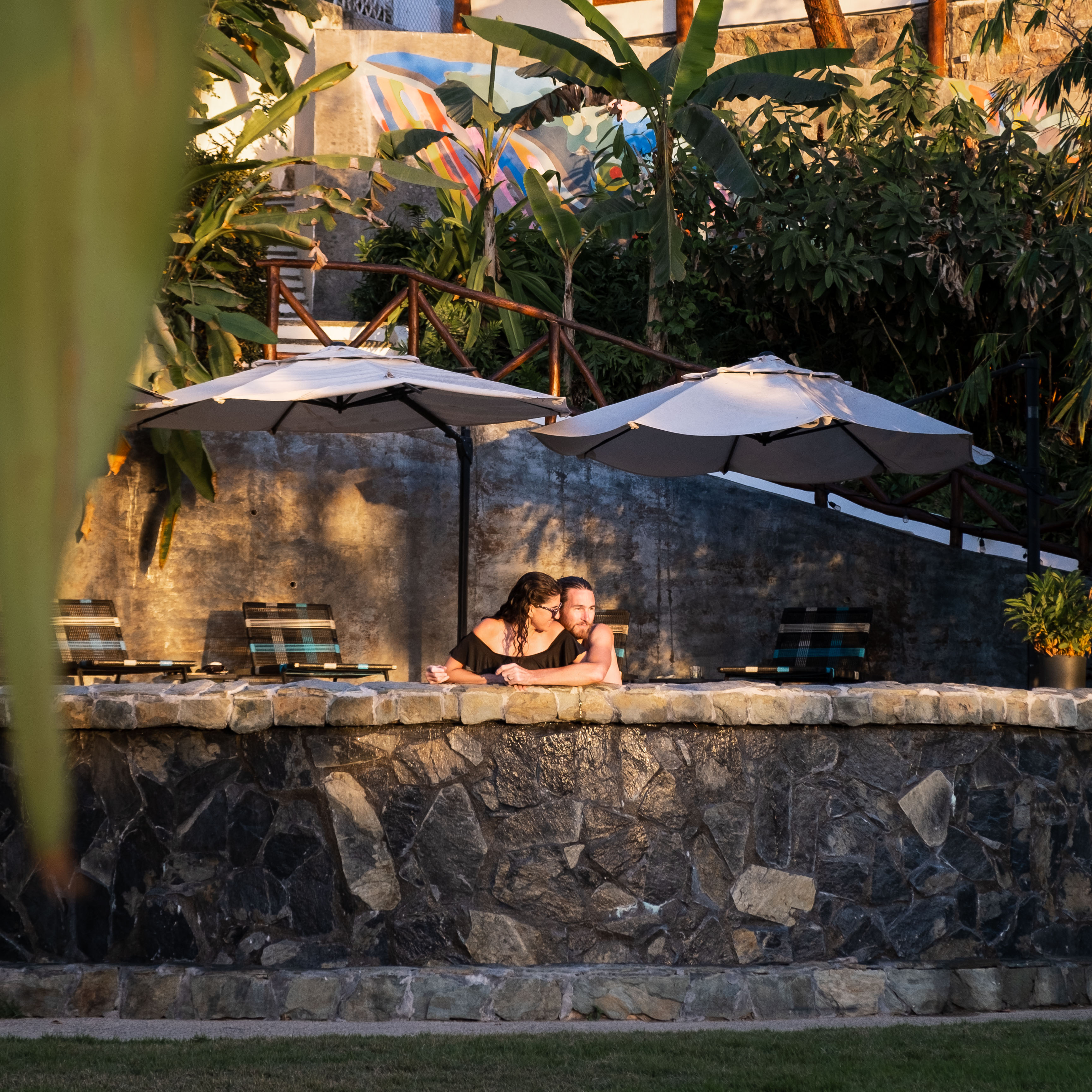

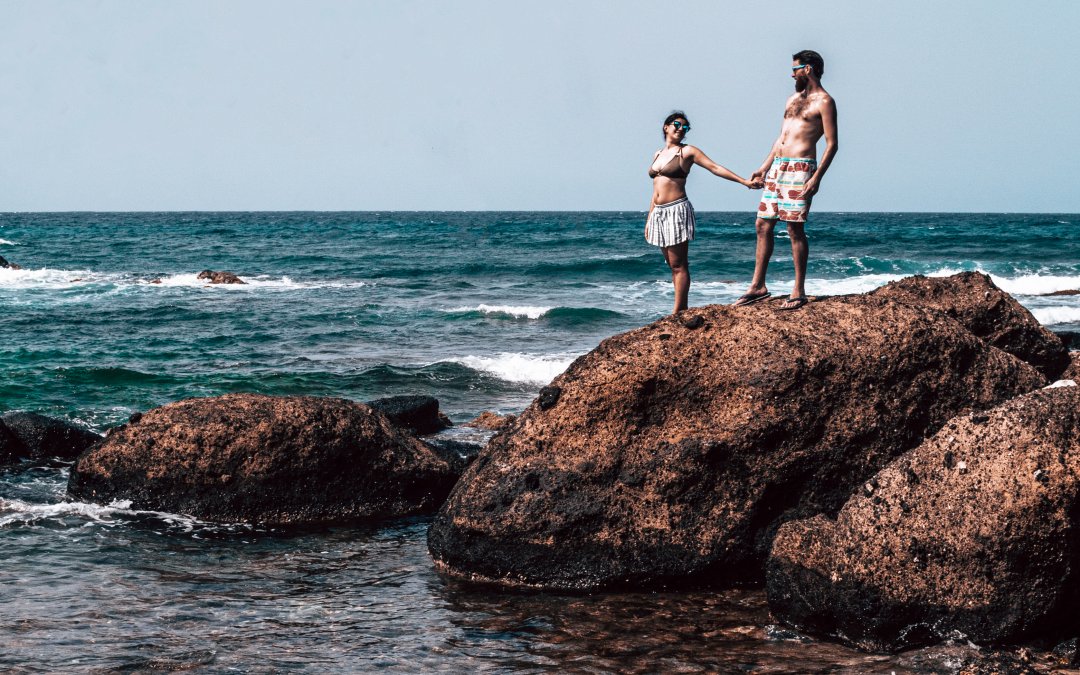
Awesome!!
I can’t tell you how happy it makes me that other people out there reuse their bread bags AND pick up trash at the beach. Thank you for your thoughtful list and tips.
So happy this was helpful… and that we’re also not alone in our eco-friendly ways! Cheers!